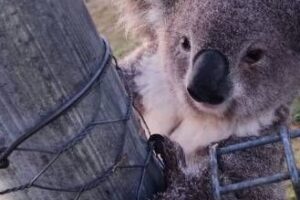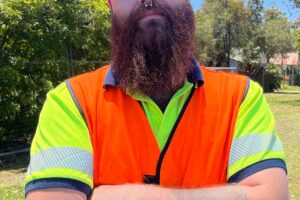
Seventy-one schools in the ACT were shut on Monday, after more coloured sand products were recalled due to an asbestos risk.The closures came after the Australian Competition and Consumer Commission (ACCC) issued a recall notice last week for other coloured sand products, sold at retailers including Officeworks.That followed laboratory testing that detected traces of two types of naturally occurring asbestos in the products, prompting the closure of 15 schools in the ACT and one school in Brisbane on Friday.”Unfortunately, these sand products are even more widely used in our schools than the Officeworks products,” ACT Education and Early Childhood Minister Yvette Berry said in a statement.
Here’s what you need to know.
What products were recalled?
The recalled items are all coloured sand products, which are often used for children’s art and sensory play in schools.The products recalled by the ACCC last week included Kadink Sand, Educational Colours Rainbow Sand, Creatistics Coloured Sand, and Kadink Decorative Sand.On Sunday, more products were recalled by Target and Kmart: a multi-coloured 14-piece Sand Castle Building Set sold at both chains, and three varieties of a Kmart Anko product called Magic Sand — blue, green and pink.
Several coloured sand products were recalled by the ACCC last week. Source: Supplied / Australian Competition and Consumer Commission
Those products were identified through independent testing commissioned by the Faculty of Asbestos Management of Australia and New Zealand.
Why were the products recalled?
Asbestos, a naturally occurring mineral made up of microscopic fibres, has been a prohibited substance in Australia since the end of 2003.It’s dangerous as when it’s disturbed, such as in products containing it, those fibres can become airborne and inhaled by people, increasing their risk of developing debilitating diseases such as mesothelioma, lung cancer or asbestosis.The type of asbestos identified in most of the affected products was tremolite, with another type, chrysotile, also identified in some.
Crocidolite, a blue asbestos considered the most hazardous of the six types, has not been identified.
How did asbestos get into these products?
The products included in the recall were manufactured in China and imported into Australia before being sold by local suppliers to retailers.
While Officeworks, Kmart and Target were the most prominent stores that sold the products, more than 80 retailers stocked at least one of the affected products.
More than 80 retailers stocked at least one of the affected products. Source: Supplied / ACCC
It’s unclear how the sand was contaminated. In an article for The Conversation last week, the University of Sydney’s Brian Oliver wrote that if the sand was manufactured by crushing rocks, then it’s possible asbestos could have been in the source product.
Have the products been identified in other states and territories?
Kadink Sand has also been identified at more than 100 sites in South Australia. The majority of these had the sand in containers, which the state’s government is helping to remove. About 20 had ‘loose’ sand. While hazard notices have been issued, no schools have been shut down.In NSW, the Department of Education issued a safety alert to the state’s public schools last week to remove affected products, but no schools have been closed.
Other states and territories have also issued alerts advising schools, customers and service providers to stop using the sand products, but no more schools appear to have been closed as a result.
How high is the risk?
Berry said that preliminary assessments indicated the products posed a low risk to human health.Air testing that had been carried out across public schools had come back negative for airborne asbestos, she said. Health officials did not recommend any clinical assessment for people who had been in contact with those products.
The release of respiratory asbestos fibres from the sand was unlikely to occur in the products’ current state — unless the sand was crushed or pulverised by mechanical means.
“All of the advice to date confirms the risk is low,” she said.
“However, the ACT has strong work health and safety laws, and we are required to eliminate risk as much as reasonably practicable.”
What should you do if you have one of the products?
According to the federal government’s Asbestos and Silica Safety and Eradication Agency, if you own any of the affected products, you should stop using them immediately, and clean up sites where they were used, using wet cloths to avoid generating dust.You should wear protective gear including gloves, mask and disposable coveralls. The agency says to double-bag the sand, protective gear and clothes, and store them in a secure location.If the sand is still in its packing, it should be placed in a heavy-duty plastic bag, sealed with tape and stored securely before adequate disposal.After disposal, you can contact the retailer you bought the product from to arrange a refund.— With additional reporting by the Australian Associated Press.
Source





